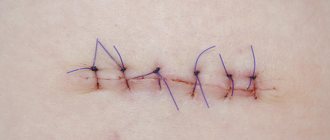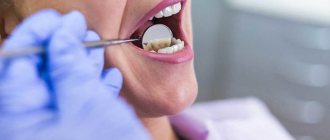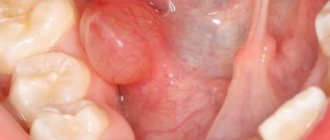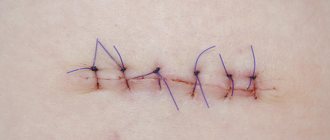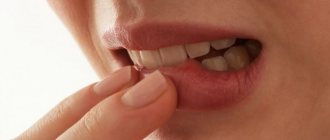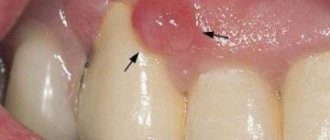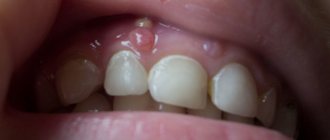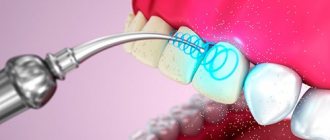0
Each of us probably knows what it’s like to be in a hospital. During the recovery period, you want to get home quickly and forget the hospital “hell” forever. Now we will talk about abdominal operations, or more precisely, about postoperative sutures. So, abdominal surgery is a surgical intervention in the abdominal cavity for the purpose of treating or removing an organ.
Domestic hospitals do not keep patients for long after surgical interventions. After five to seven days after the operation, in the absence of complaints, temperature and if there are positive dynamics and tests, the patient is sent home.
Medical personnel are required to tell the patient how to care for sutures. If the wound scars well after surgery, then it is enough to treat it with laundry soap and boiled water. However, it happens that the wound begins to get wet, ooze or fester. The first step is to consult a surgeon, because these signs indicate that the wound has become infected. Is it dangerous! After all, bacteria can spread, and because of this, treatment can take a long time.
When examined by a surgeon, if the stage is not advanced, drug treatment is prescribed. In addition to medications, the doctor recommends dressing the postoperative wound twice a day and sends you home.
How to treat a wound after surgery at home?
To do this you will need the following:
- Zelenka;
- Hydrogen peroxide;
- Sterile cotton wool;
- Ear sticks (2 pieces);
- Sterile bandage;
- Sterile gloves;
- Band-Aid;
- Antiseptic (in our case, antibiotic).
Step-by-step instructions for dressing a postoperative weeping wound
Before you begin, you need to get yourself in proper shape. Roll up long sleeves and pin up long hair or wear a headscarf. Wash your hands with soap. We put everything you need from the list above on the table and get started.
We wear sterile gloves to prevent the transmission of diseases through blood.
Here is our post-operative wound. In this case, the purulent process that we see should be alarming. Dip the ear stick in peroxide and lubricate the wound.
We wait for the peroxide to “hiss” and then soak it with the second end of the stick. Then we repeat this procedure again.
That's it, the wound and seam are treated with peroxide. If peroxide drips from the wound during treatment, wipe off the droplets with cotton wool.
Now it needs to be treated with green paint. You don’t need to treat the entire surface with it; it’s enough to just treat the seams and redness specifically. A purulent or inflamed wound should not be treated with brilliant green.
Now treat the wound with powder or ointment. In our case, it’s powder.
Using a stick, move the powder to the center and press it down so that it does not crumble.
Prepare a sterile dressing. We cut a piece of bandage and fold it in half. We put a bandage on the wound so that it covers the wound itself.
We glue it with an adhesive plaster so that the wound “breathes.”
Hello, Elena.
Any postoperative sutures, including those after removal of an inguinal hernia, must be treated daily. If a nurse does this in the hospital, then at home you will have to take care of the treatment yourself. But don’t worry, you will succeed, it’s not difficult at all, and you don’t need to have any special professional skills.
The most important thing during this period is to keep the wound clean. If the seam has come apart, then even a specialist will not be able to give any exact instructions in absentia, because you need to clearly see what is happening in the wound. You need to contact the surgeon who operated on you as soon as possible so that he can give recommendations on how to care for the wound, and perhaps eliminate the consequences. Here, depending on the type of wound, there are two options: either it is left open and it is recommended to clean it (the medicine is also prescribed by the doctor), or it is re-sutured, which is less common. For example, a wound is kept open during inflammation and suppuration. If any problems arise in the wound (hematoma, suppuration, etc.), the doctor places a drainage and may remove one or more skin sutures located in this area of the wound. Now this area will heal by secondary intention, that is, on its own. Usually, if the postoperative period proceeds without complications, the sutures are removed on days 7-9, depending on their location and the individual characteristics of the body. If the wound is large, then first the stitches are removed after one, and the rest the next day. If catgut sutures are applied, they do not need to be removed, since after a certain time they disappear on their own.
The wound is treated at home with a skin antiseptic: brilliant green, alcohol, iodoperone, iodinol, forisept-color, etc. The best disinfectant for the skin is fucorcin or Castellani liquid: it does not need to be washed. If necessary, the wound is washed with hydrogen peroxide, dried, then (if indicated) a bandage is applied. It is most often alcoholic, but dimexide diluted 1:3 with saline can also be used. solution or with 3 parts of water, and dioxidin 1%, and any other remedy that the doctor deems necessary.
If the wound is no longer open, then everything is still better and simpler. A good healing effect is provided by sea buckthorn ointment, levomekol ointment, and ointments containing panthenol. Also, at the healing stage, postoperative sutures can be lubricated with milk thistle oil: it heals wounds much more actively than sea buckthorn oil and promotes the resorption of rough scars. A seam treated with milk thistle oil will be neater and not as rough. At this stage, the main thing is time, patience and a positive attitude.
Only two or three months after the stitches are removed can you use ointments such as Contractubex and Mederma. They should never be used on an open wound.
Be healthy!
Additionally
Postoperative wound healing depends largely on the patient’s body: for some, wounds heal, as they say, like on a dog, while for others the process drags on for months. However, both need to adhere to certain rules for processing sutures after surgery. In this article we will look at what and how to treat postoperative sutures.
There is a guarantee of complete normal healing of the wound only if the postoperative wound is sterile. Fresh wounds are closed immediately after surgery using sutures. In this case, the sutures must be placed so that there is complete joining of the edges of the wound to completely eliminate the possible formation of a cavity.
A seam came apart after surgery: causes and first aid
After surgery, fears involuntarily arise as to whether the suture may come apart after the operation. Indeed, such a complication, although infrequent, still occurs in medical practice. The patient himself can contribute to the divergence of the wound edges by ignoring the doctor’s instructions.
Surgical sutures can be internal or external. The former ensure the strength of the tissue connection. They are applied with catgut, a self-absorbing material obtained from animal intestines. External, visible sutures temporarily secure the skin for better scarring. They are made with linen, silk or synthetic strong threads.
As the tissue regenerates, the external sutures are removed. As a rule, the removal of threads occurs 6-14 days after surgery. Completely connective tissue grows together after 2-3 months.
Causes of seam divergence:
- Wound infection.
- Heavy lifting or excessive physical activity.
- Problems with blood circulation due to atherosclerosis or diabetes.
- Violation of the application technique and timing of suture removal.
- Reduced immunity, slowing down the healing process.
- Long-term use of corticosteroids.
- Trauma to the wound area.
Elderly and obese people, cancer patients, HIV-infected people and diabetics often face the problem of suture dehiscence. Normally, the wound should dry out and gradually heal. If it gets wet, bleeds and festers, and the tissues around it hurt, are red and swollen, then the seam is inflamed. Internal suture dehiscence may be indicated by pain, fever, low pulse and dizziness.
At the first hint of inflammation or suture dehiscence, seek medical help immediately. It is best to consult the surgeon who operated on you. The doctor will assess the general condition of the wound and recommend a bacterial culture and blood test.
Additional studies may be required - radiography or ultrasound to determine the degree of wound divergence, the location of accumulation of ichor or pus.
In most cases, conservative therapy is prescribed. It includes:
- taking antibiotics and multivitamins;
- regular cleansing of the wound with a solution of hydrogen peroxide;
- disinfection of the damaged area of skin with brilliant green or ethyl alcohol;
- 5-minute ultraviolet lamp irradiation procedures;
- compresses with dioxidine solution;
- application of regenerating ointments.
With normal healing, after 2-3 months you can apply products that promote the resorption of scars. If the wound dehiscence worsens, new surgery with repeated suturing may be required. In case of severe concomitant diseases that complicate the healing process, a temporary or permanent mesh is applied to the damaged area.
So, suture dehiscence may be the result of a weakened immune system or a medical error. At the initial stage, this complication is treated with medication.
Be the first and everyone will know your opinion!
- about the project
- Terms of use
- Terms of competitions
- Media kit
Certificate of registration of mass media EL No. FS77-67790,
issued by the Federal Service for Supervision of Communications,
information technologies and mass communications (Roskomnadzor)
December 13, 2020 16+.
Founder: limited liability company "Hirst Shkulev Publishing"
Editor-in-Chief: Dudina Victoria Zhorzhevna
Copyright (c) Hirst Shkulev Publishing LLC, 2020.
Any reproduction of site materials without the permission of the editors is prohibited.
Contact details for government agencies
(including for Roskomnadzor):
Phone: +7(495) 633-5-633
in Women's network
Please try again
Unfortunately, this code is not suitable for activation.
How to process seams?
It is important not only what to treat postoperative sutures with, but also how to treat it. Much in this regard is determined by the nature of the operation itself. The dressing must be changed until the stitches are removed. Dressings must be carried out in a specially designated place (hospitals and clinics have special dressing rooms). Daily dressings will help the wound heal faster, as air is known to help dry out sutures.
Sutures are usually removed on days 7-14, depending on the location of the wound.
The process itself is quite painless and does not require any anesthesia. Immediately before removing the seam, it is processed. Once the suture is removed, the wound is no longer covered with a bandage. After 2-3 days you can take water procedures.
Complications
After surgery, you should always carefully monitor the condition of your wound and stitches.
. Is the bandage wet - is it blood, bile, pus, etc. is there any swelling, edema, redness around the seam, etc. These alarming signals indicate that there may be complications, and therefore a doctor’s consultation is necessary.
Folk remedies to help postoperative sutures
- Calendula cream. The base is 1.5-2 cm calendula cream. Add 1 drop of orange oil and 1 drop of rosemary oil to it. Lubricate stitches to prevent scarring and promote better healing.
- Tea tree oil. Treat sutures immediately after surgery, then twice a day for 7 days.
MOST INTERESTING NEWS
I had a small cut on my forehead, they stitched it up. I lubricated it with regular iodine. And after the wound has healed. Then I started using Contractubex cream to avoid leaving a scar.
At medical school we were taught this: until the stitches are removed, we treat only with alcohol-containing preparations. Optionally - medical alcohol 96% (it additionally dries the skin). After removing the stitches, another day of alcohol-containing solution or miramistin (disinfection). And only then - a variety of creams and ointments for resolving scars. It is better to have an unsightly suture than to cause additional infection.
I encountered the treatment of seams twice: the first time on the back - I simply smeared it with brilliant green every day and made dressings. It took about a week to heal. The second time was more difficult and took longer to heal - stitches after childbirth (about two weeks). Before going to bed, the doctor prescribed a bandage with Solcoseryl cream to be applied to the stitch. As an option, you can also use its analogue - Actovegin.
Thank God, I only had postoperative stitches once in my life, after childbirth, but there were a lot of them. It took about a month to heal, the doctor said to wash the wound with a solution of 9% hydrogen peroxide, and lubricate the seams with brilliant green, do the procedure once a day. By the way, previously in maternity hospitals, postpartum sutures were treated with a 9% peroxide solution, but since 2012, for some reason this instruction was canceled, they said to smear only with brilliant green, and everything will heal, but doctors and obstetricians continue to use peroxide for some patients.
Personally, I faced the problem of healing sutures after an ankle fracture: I had a complex comminuted fracture and required surgery to implant plates. But I can’t complain about the difficult healing process: they just bandaged me every day, and on the tenth day the stitches were removed. It was a little painful, but I followed all the doctors’ recommendations and the wound healed. On my own behalf, I rubbed rose oil and macadamia oil into the seams 2 times a week, which made the seams almost invisible.
The treatment of postoperative sutures is quite a responsible task; first of all, you need experience and knowledge; the most popular means for treating sutures are brilliant green and iodine, since I have been using them myself for a long time.
The first time I had stitches, I was 7 years old, the stitch was on my stomach, they treated it with brilliant green and then the threads were pulled out alive - it was not a pleasant operation. The second time, after giving birth, there were a couple of stitches, but the threads were absorbable - it’s much more convenient! They treated it with brilliant green and streptocide, but for three weeks it was impossible to plant. Postpartum stitches, in my opinion, are the most unpleasant, because they are in such a place that they hardly dry themselves.
I just smeared green on the stitches on my hand while they were bleeding. And then I applied tampons with contractubex, changed them in the morning and before bed. Just one tube barely lasted me a week. Everything healed normally, without complications. My roommate applied some kind of cream or ointment (like Bepanten) with the addition of tea tree oil. Then I twisted my finger at my temple, but it turns out it’s really possible.
Excuse me, there is no way you can use 96% alcohol on the seams. it will cause protein denaturation and tissue burns. 70% alcohol must be used. Disgrace your medical school)
https://nmedicine.net
Undoubtedly, all people sooner or later encounter various diseases. Some of them necessarily require surgical intervention. Such treatment never goes away without leaving a trace. The manipulation always leaves a person with a postoperative suture. You need to know how to properly care for such a scar, and in what cases to seek help from a specialist.
Signs of postoperative suture dehiscence
The suture after surgery may come apart even before the sutures are removed if non-absorbable suture material is used. One or more symptoms may appear while still in the hospital:
- sharp pain;
- bleeding;
- noticeable swelling;
- redness;
- hyperemia - skin temperature;
- the edges of the wound move away from each other;
- an open wound is visible.
In this case, doctors will fight the problem. It is possible that the stitches will be removed and replaced with another material. When you are already at home, you will have to deal with the problem yourself.
In medicine there is a special term for a ruptured surgical wound - eventration. Eventration has 4 degrees:
- The first degree is characterized by the divergence of all layers of the abdominal wall, with the exception of the skin - subcutaneous eventration.
- The second degree is called partial everration. The bottom of the damage is the stomach, intestines and other internal organs.
- The third degree is complete eventration, when all layers of the abdominal wall diverge, and intestinal loops or omentum approach the edge of the wound.
- The fourth degree is called evisceration or true eventration, when the internal organs partially fall out of the wound. As a result, intestinal strangulation, partial obstruction and suppuration may occur.
DETAILS: German hip prosthesis
Diagnosing eventration is quite simple. At an early stage, a dry or serous discharge appears on a dry gauze pad applied to the injury. This suggests that the deep layers of the wound have already separated, everything is held together only by the glued skin. Sometimes emphysema is observed around the wound - the edges are swollen, and upon palpation a distinct crunching sound is heard, as if from dry snow or starch.
Types of seams
Depending on the scale of the operation, the size of the suture may vary significantly. Some interventions, for example, after laparoscopy, leave a person with small centimeter incisions. Sometimes such seams do not require the use of special threads and are simply glued together with adhesive tape. In this case, you need to ask your doctor how to properly care for the damaged area and when to remove the patch.
Also, the postoperative suture can be of impressive size. In this case, the fabrics are sewn together in layers. First, the doctor combines the muscles, tissues of blood vessels, and only after that makes an external suture, with the help of which the skin is combined. Such scars take longer to heal and require careful care and special attention.
Types of formations
When it is necessary to remove a scar on the lip, you must first determine what type it is. There are several of them:
| Types of scars | Description | Photo |
| Normotrophic | It is a mark that differs from other fabrics only in color. These are the easiest scars to simply disguise and practically do not require serious removal measures. A normotrophic scar may differ from normal tissue in sensitivity | |
| Atrophic | It looks like a depression on the skin of the lips, as it is formed when there is a deficiency of collagen in this area | |
| Hypertrophic | This formation protrudes against the background of the rest of the surface of the lip. Sometimes it can be very noticeable. In addition, a hypertrophic scar has a bright color. The cause of this type is infection of the lesion on the lip. | |
| Keloid | The difference that makes this type the most problematic to eliminate is its ability to grow tissue. Reduced immunity affects the formation of keloid scars |
What you need to know about seams?
The postoperative suture always needs treatment. From the moment your doctor places the sutures on your skin, the medical staff will wash your sutured tissue daily. In some cases, treatment must be carried out several times a day. The doctor will definitely notify you about this after the procedure. If complications occur or germs enter the wound, it may be necessary to use additional antiseptic and antibacterial agents for treatment.
The suture is removed after surgery in about a week. If tissue healing is slow, this period can increase to two weeks or even one month. During this time, it is necessary to properly handle postoperative sutures. The healing of the wound is determined by the attending physician. It is he who sets the deadline when the threads can be removed.
In some cases, suture removal is not required after surgery. Sometimes doctors use special self-absorbing threads. They are applied in most cases to soft tissues and mucous membranes. This method of tissue bonding is often used in gynecology and plastic surgery. Despite the fact that such threads are not removed, it is also necessary to process these postoperative sutures. Wound healing occurs when the tail of the protruding stitching material simply falls off.
What action should be taken if the seam breaks?
If you feel a sharp pain, as well as a rise in temperature, or purulent discharge, you should immediately consult a doctor
. Only a doctor can determine the condition of the uterus, as well as the suture itself, so it is advisable to frequently visit the office of a gynecologist or obstetrician.
The suture may come apart immediately after discharge from the hospital, in this case you can use Levomekol
, as it prevents the appearance of suppuration. If the suture comes apart after several years, then the suture is applied with re-absorbable threads. In this case, the healing process can be long.
The seam itself must be treated: with special ointments that can be purchased at the pharmacy, with a light solution of potassium permanganate after each visit to the toilet. Weak decoctions of chamomile and calendula are perfect. They not only relieve irritation and redness, but are also natural antibacterial agents.
Necessary materials
First you need to purchase all the necessary materials. This can be done at any pharmacy chain located near your home. If you have difficulty walking, ask your relatives or neighbors to buy everything you need.
Treatment of a postoperative suture requires the presence of ordinary brilliant green, 3% hydrogen peroxide, an alcohol solution and hypertonic fluid. You will also need sterile bandages, tweezers, postoperative patches of suitable sizes and cotton swabs.
In some cases, postoperative sutures are treated with cotton wool. When independently caring for damaged tissue, it is better to avoid using this material. When rubbing the skin, small pieces of cotton wool can cling to the applied threads and remain on the wound. As a result, inflammation may occur. That is why you should give preference to sterile bandages or special dressings.
Preparing the treated area
Before treating the wound, it must be opened. Wash your hands with soap and disinfect them with an antiseptic solution. Carefully remove the bandage and inspect the skin. There should be no liquid on the rumen. If ichor or pus oozes from the wound, you should consult a doctor as soon as possible. This means that there is an inflammatory process in the wound.
Treatment of the surface of the scar In the event that the surface of the tissue is completely dry, you can begin to process the seam yourself. To do this, take a comfortable position and prepare all the necessary materials.
To begin, roll up a small piece of sterile bandage and soak it in an alcohol solution. Gently wipe the scar with a damp cloth. Make sure that all wounds and holes on the body are moistened with liquid. After this, let the skin dry and proceed to the next step.
If pain, pulsation and burning occur in the suture area, you must do the following. Roll the gauze bandage into four layers and soak it in a hypertonic solution. Place the fabric over the seam and seal it with adhesive tape. This compress will help relieve pain and swelling in the wound area. If you are not bothered by unpleasant sensations, then skip this point and proceed further according to the instructions.
Take a cotton swab and soak it in brilliant green. Carefully treat all wounds that were caused by the suture, as well as the scar itself. After this, apply a sterile bandage to the cleaned area and cover with a bandage.
If the doctor allows it, you can leave the stitch open. All wounds heal faster in the air. Remember that in this case you must be careful not to damage the scar.
How to care for the seam after removing the threads?
If you have already had your stitches removed, this does not mean that you do not need to take care of your scar. Remember that after water procedures it is necessary to treat the injured surface. Ask your surgeon how long the scar treatment should take. On average, doctors recommend caring for the damaged surface for about one more week.
After taking a shower, pour hydrogen peroxide into the grout in a thin stream. Wait until the reaction occurs and the liquid hisses. After this, blot the seam with a sterile bandage and proceed to the next step.
Soak a cotton swab in brilliant green and treat the seam and existing postoperative wounds. Repeat this procedure after each bath.
How can you treat the wound area after surgery?
Every person should know what exactly the stitches should be treated with after surgery so that the healing process takes place in the shortest possible time. Various antiseptics can be used for these purposes. Such agents include iodine, potassium permanganate, and alcohol. You need to be very careful with iodine, as in large quantities this product can dry out the skin.
If desired, you can also use ordinary brilliant green, which should be used to treat the wounds every day for 6 days. This can be done very conveniently using ordinary cotton swabs. The problem is that with this medication it is often not clear how the wound is healing and whether any complications have appeared. Zelenka can be replaced with fucorcin. This product should be used to treat not only the seam, but also the area around it. However, experts warn that after the wound has healed, it will not be easy to wash off fucorcin.
If you have hydrogen peroxide on hand, then the problem can be considered half solved. A small piece of gauze should be soaked in hydrogen peroxide and applied to the affected skin. A slight burning sensation may occur. Don't worry, as this reaction is considered normal.
40% medical alcohol can be used if the seam is inflamed in some places. In this case, it is not worth treating areas of the skin where there is no inflammation, as this can lead to their drying out, which will significantly slow down the process of tissue regeneration. If after this the inflammatory process does not go away, and there is constant aching and pulling in the area of the suture, then you should definitely seek help from a specialist.
Also very popular are Contractubex ointment and silicone patch, which prevents the formation of keloid scars.
In the first days after surgery, it is recommended to apply a bandage with a hypertonic solution to the affected areas of the body.
This solution is prepared quite simply: pour 2 tablespoons of table salt into 1 cup of boiling water. The finished product should be cooled to room temperature, a gauze cloth should be moistened in it, applied to the suture site and bandaged with a bandage.
Often, in the second week after surgery, the patient begins to complain of unpleasant itching in the suture area. This phenomenon is considered quite normal, since it is during this period that the active healing process takes place. These unpleasant symptoms can be eliminated using a cotton pad generously soaked in a novocaine solution.
Often after the operation, for one reason or another, the sutures come apart, which causes severe pain and the appearance of unpleasant discharge. In this case, you should not wait long; you should immediately seek help from a specialist. This will help avoid adverse consequences. In such situations, doctors, as a rule, resort to Vishnevsky ointment. This remedy helps remove pus from the wound and promotes its speedy healing.
Suture came apart after spinal surgery
How do you think a person experiences a suture dehiscence after surgery? Of course he panics. Therefore, the main advice that can be given to the patient is to try to calm down and not fall into despair. The first step is to “assess the damage” and examine the wound. After that, no matter what you see, the best solution is to contact a specialist as soon as possible.
Types of surgical sutures. Surgical sutures can be internal or external. Internal seams are necessary for the strength of the fabric connection. External ones are used for short-term fixation of the skin.
The main causes of seam divergence. Although seam dehiscence is quite rare, there are several reasons why this problem can occur, such as:
- diabetes;
- increased physical activity;
- elderly age;
- bad habits;
- infection in the wound;
- chronic and infectious diseases in the patient, etc.
Symptoms. It is unlikely that anyone will be able to fail to notice the divergence of the seam. The main symptoms are redness, swelling, sharp pain accompanied by bleeding, etc.
At this stage, it is not so important to find out the reason for the seam divergence. The main thing is to solve the problem and understand what to do
Actions in case of seam divergence. First of all, you need to postpone panic until later. In a state of stress, you are unlikely to be able to tune in to the right actions. Remember: suture dehiscence after surgery is not considered a serious complication. But if the wound is bleeding, and the tissue around it is swollen or red, you should urgently contact a surgeon or a specialized clinic. The best solution is to immediately go to your doctor. He is the one who can quickly and effectively eliminate this trouble. First, the doctor will examine the condition of the wound and only after that will decide whether additional studies, a computed tomography scan or a blood test are needed. Computed tomography is most often used to determine the location of the accumulation of pus.
Remember that only qualified specialists can help you by providing timely medical assistance. Don't let things take their course and don't self-medicate.
What will happen? If the number of discrepancies is small and the wound is shallow, then after anesthesia, stitches are placed on it again. However, if inflammatory processes have begun in the wound, it is recommended to wait until it is completely healed. To speed up this process, the wound must be treated with special ointments and solutions - this promotes rapid healing of the edges. After the wound has completely healed, its damaged edges are excised. After all stages, secondary sutures are applied to the wound area with excised surfaces.
In order to remove infection and inflammation, it is recommended to carefully care for the damaged area. Treatment of the wound with special antiseptic agents is usually prescribed. Do not peel the gauze bandage from the skin. It is recommended to simply moisten it in a three percent solution of hydrogen peroxide, and it will come off by itself.
Each case of seam divergence is very individual. Therefore, the treatment is prescribed by the surgeon depending on the characteristics of your body and the size of the wound. Sometimes the doctor believes that the best solution is not to re-stitch the wound, but to let the wound heal. In this case, the surgeon advises rinsing it with chlorhexidine or hydrogen peroxide. However, if the case is serious and the wound is deep, the specialist reapplies the stitch.
Wound care. Remember all the recommendations that the doctor gave after the first operation? They remain valid. You should not keep the wound closed all the time; this will not make it heal faster. For speedy healing, the wound needs air. Therefore, sometimes the bandage needs to be removed. After surgery, the patient is often prescribed multivitamins. Don’t forget about them, because after surgery the immune system can be weakened, and vitamins will help strengthen the body.
Of course, a seam coming apart is not the most pleasant moment. However, no one is immune from such a nuisance. Remember that in most cases, discrepancies can be avoided by following your doctor's recommendations. Keep the bandage clean and try to prevent infection from getting into the wound. It is necessary not only to monitor hygiene, but also to treat the seams with antiseptic preparations. These simple tips will help you prevent further troubles such as seam splitting.
source
How to process seams?
It is important to know not only how to treat seams, but also how to do it correctly. Treatment of wounds should be carried out 2 times a day, without skipping a single procedure. In some cases, on the recommendation of doctors, wounds can be treated more often.
The dressing must be changed until the stitches are removed. Dressings should be carried out in hospital rooms that are designed specifically for this purpose. Such daily procedures will help speed up the healing of the skin. The thing is that air helps the joints dry out faster. If dressings are performed at home, then you need to be as careful as possible. The bandage should be removed very carefully, as the bandage often sticks to the wound. Only after this can the affected area be poured with a thin stream of hydrogen peroxide, and then with an antiseptic.
An important rule is that before treating postoperative injuries, hands must be perfectly clean. Therefore, before starting the procedure, hands must be thoroughly washed with soap, preferably up to the elbows.
When treating postoperative wounds, you should never remove scabs or remove whitish plaque, as this indicates the structure of a new layer of epithelium. If this layer is damaged, depressions may appear, which will lead to the formation of scars.
In most cases, sutures are removed 7-10 days after surgery. This procedure is quite painless, so it takes place without any anesthesia. Immediately before starting this procedure, the wounds are treated with special means. Once the sutures are removed, bandages are no longer necessary. You can take water procedures only after 2-3 days.
When sutures are removed from a wound after common operations
Here are the times when sutures are usually removed after the most common surgical operations and for various parts of the body:
- after cesarean section: on the 8-10th day;
- after amputation: on the 12th day;
- after laparotomy: on day 7;
- after scleroplasty: on day 7;
- on the abdominal cavity: on day 7;
- on the chest: on the 7th day;
- on the face and neck: on the 7th day.
Sutures should be removed only when the edges of the wound have fused securely. However, if the suture is not removed on time, this can also lead to problems. The stitches may fester and the threads may grow into the skin, leaving a more noticeable mark from the wound.
In any case, the decision on the need or possibility of removing sutures should be made by the surgeon after examining the wound.
How to treat sutures after a caesarean section
After a cesarean section, it is very important to properly handle the sutures. After such surgical intervention, the wounds are often treated with a 5% solution of potassium permanganate for 2-3 days. The dressing should be changed constantly. This will help you notice suppuration in time. The threads are usually removed on the 6th day before discharge. When taking a shower, you should never put too much pressure on the seam area and use hard sponges for washing. This can cause keloid scars.
After the birth of the baby, very often, the young mother is given internal and external stitches. Internal ones are considered to be those that were applied for ruptures of the walls of the vagina or cervix. There is no need to look after them. Care should be taken of the external seams that are placed on the perineum. During the first time after surgery, midwives take care of everything. They moisten the affected areas twice a day with a solution of potassium permanganate or brilliant green. After discharge, such activities should be carried out independently after each bath.
If scars do appear after the birth of a child, they can be easily removed using a scar resurfacing procedure. Laser resurfacing is a very effective procedure that is carried out today in many beauty salons.
